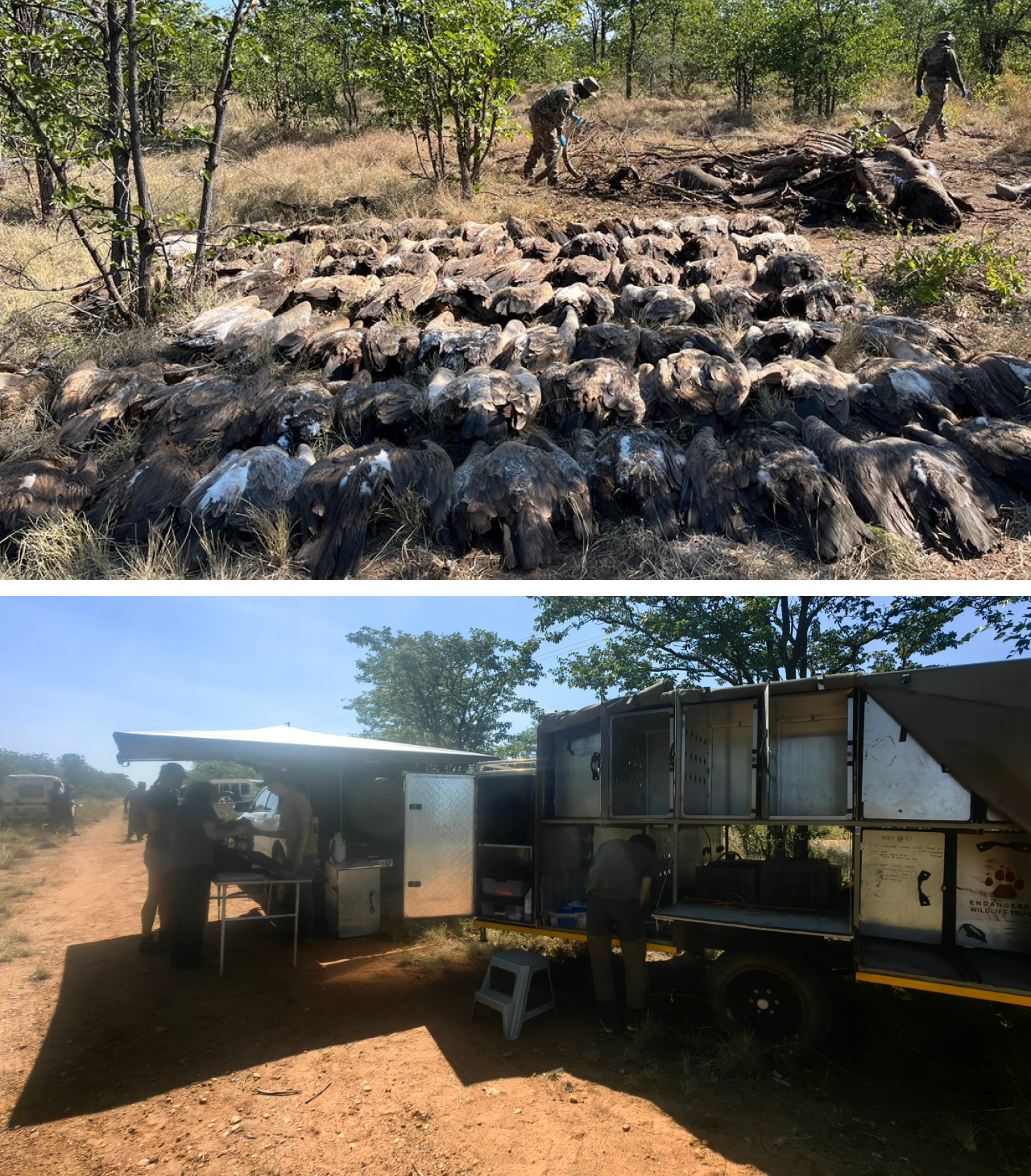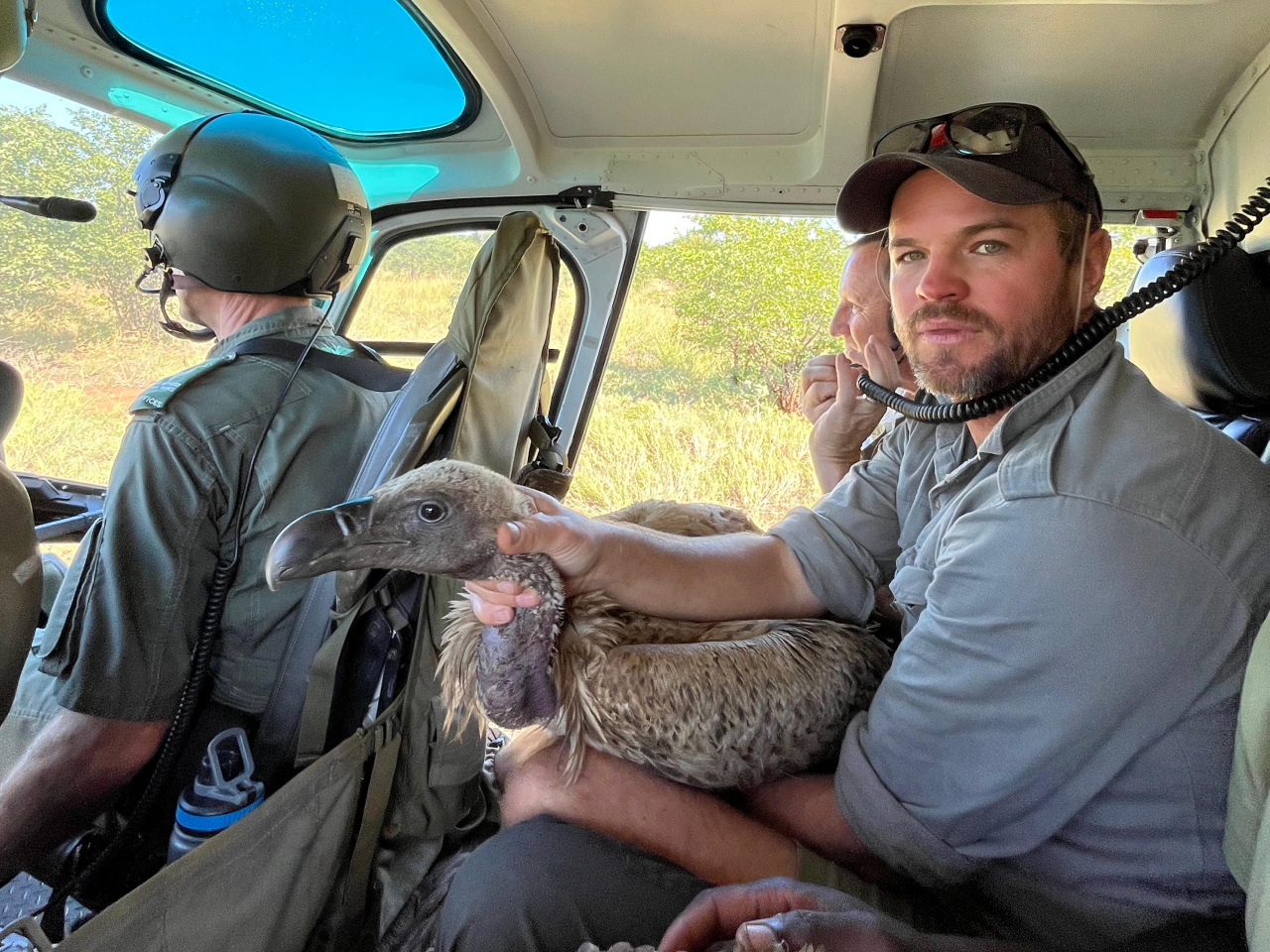
Endangered Wildlife Trust
Over 200 Vultures Killed in Mass Poisonings in South Africa; 83 Rescued in Unprecedented Response
On Thursday, May 8, 123 vultures were found dead in a mass poisoning incident in Kruger National Park, South Africa. Due to a surveillance system and quick response time by officials, 83 poisoned vultures were rescued and transported to wildlife rehabilitation facilities for treatment. Just ten days later, on Sunday, May 18, another mass poisoning scene was discovered in Lionspruit Game Reserve in Mpumalanga, South Africa. An additional 102 vultures were found dead with no survivors.
Kruger National Park Incident
The Kruger National Park poisoning incident was detected around 6 a.m. on May 8 by a wildlife poisoning surveillance and detection system, co-developed by the Endangered Wildlife Trust (EWT) and North Carolina Zoo, in partnership with The Peregrine Fund (TPF). Rapid detection of wildlife incidents enables response teams to mobilize quickly, as was the case on May 8.
“Illegal poisoning is taking a devastating toll on vultures and other wildlife,” says Corinne Kendall, Southern Africa Program Director for The Peregrine Fund. “Our system for finding these sites quickly has been key for identifying and addressing poisonings not just in South Africa, but also in Tanzania.”
In an unprecedented response time, EWT and South African National Parks officials were able to reach the site in under three hours. When officials arrived on site, they discovered over 100 dead vultures surrounding an elephant carcass suspected to be laced with a highly toxic agricultural pesticide. By the end of the day, 123 vultures had died from the incident—102 Critically Endangered White-backed Vultures, 20 Vulnerable Cape Vultures, and one Endangered Lappet-faced Vulture.
It is thanks to the fast response time of officials and additional partners that 83 vultures were rescued that had yet to succumb to the poisoning. A coordinated response involving over 20 individuals across veterinary, conservation, and enforcement sectors played a role in the response and rescue. Since rescue, 81 of the vultures have been released back into the wild following rehabilitation.
“Pesticide consumption leads to a rapid and painful death for animals involved. The quick and coordinated effort of EWT and their collaborators to reach the site and save these endangered birds is a testament to their ongoing conservation efforts,” added Kendall.
Lionspruit Game Reserve Incident
The second poaching scene was discovered on Sunday, May 18, in the Lionspruit Game Reserve, just 26 km (16 miles) south of Kruger National Park. Vulpro (an African vulture-focused conservation organization) and Wild and Free Rehabilitation Centre detected abnormal movement via GPS tracking of several vultures released after rehabilitation by the organizations. Rangers discovered a poisoned warthog carcass surrounded by over 100 vulture carcasses. No surviving vultures were found.
Increased Prevalence of Poisonings
Mass vulture poisonings have sadly become increasingly common across Africa, with vulture body parts distributed into illegal trade for belief-based uses. Within days of each other, just these two poisoning events killed 225 vultures in the greater Kruger landscape. Given that total population estimates for White-backed Vultures (the most populous species in the ecosystem) have generally been less than 1500 individuals, these poisonings could have killed 15% of this ecosystem’s vulture population. Similarly, work from Tanzania has suggested that annual mortality rates of vultures could be as high as 20%, largely due to poisoning. If poisoning of vultures isn’t stopped, it will lead to the extinction of these Critically Endangered species.
Coordinated response to poisoning and efforts to address the underlying illegal activities that motivate them will be essential for saving Africa’s vultures. The wildlife poisoning surveillance system, along with pre-planned coordinated response strategies, is crucial to quickly assessing, triaging, and managing poisoning incidents. Follow-up investigations and the gathering of reliable crime intelligence to support these can also help prevent future poaching.







